Stylish and exotic tree - Catalpa, attracts attention not only to the abundance of fragrant lush inflorescences that alter with original pod fruits, but also large green leaves, densely covering the crown of wood.
A dwarf tree with a neat spherical crown or powerful, with splashing branches, Catalpa in any corner of a park zone or a homeland area will look appropriate and very attractive.
High decorative qualities Caphata made this plant with a pet for many gardeners and landscape designers.
Fall tree - Catalpa - fast-growing unpretentious culture, every year becomes more and more popular when landscaping urban arrays and design of various landscapes.
By admiring the spectacular plant, a logical question arises: "How to grow Capital on his plot, or is it for the use of only professionals?"
It turns out that an unusual plant is completely unpretentious in care, steadily adverse climatic conditions and is easy to sit down when landing.
All these questions, as well as a species diversity of catholp, technology and agricultural plant growing culture, will be described in detail in the article.
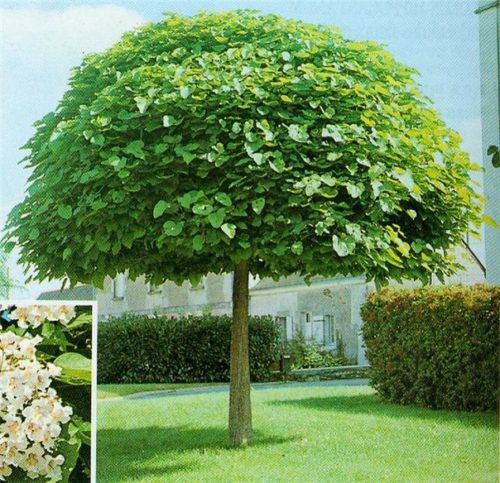
Catalpa, plant description
Catalpa - a representative of the Bignon family, the area of \u200b\u200borigin of which is considered China, Japan, America and India. In Russia, culture appeared in the 19th century and gradually from the southern, warm regions adapted and acclimatized to conditions with cold winters. Currently, Catalpa is widespread throughout Europe.
Thanks to extraordinary decorativeness, this leaf fall tree is increasingly used in landscaping and design of garden-park zones. There are also bush and low-colored forms of the catalp.
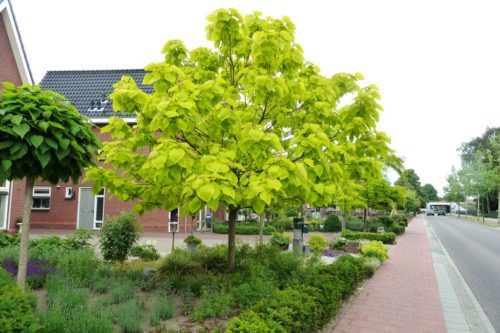
A luxurious tree with a neat thick, more often round, crown and slender, grayish color, barrel, with favorable conditions, reaches a height of up to 30 - 40 m.
A characteristic feature of the kind is the presence of large leaves, egg-shaped or heart-shaped. Sheet width, on average, ranges from 20 to 30 cm, length from 10 to 20 cm; The sheet is attached to run with a long and durable stuff. The top surface of the sheet plate is bright green, smooth, with glitter, and the bottom - matte, slightly covered in the down. Having such unusual leaves, Catalpo is deservedly called "a tree with elephant ears."
Extremely attractive Catalpa in summer, during flowering: large and lush inflorescences and fragrant flowers, densely "decorate" the entire crown of wood for 3-4 weeks. The flower of the plant reaches in diameter up to 7 cm and consists of a two-part cup and a bunny with five stamens. Color range of inflorescences, as a rule, light tones: white, cream, lilac, with a bright contrasting middle in the form of strokes and enclosures and wavy edges.
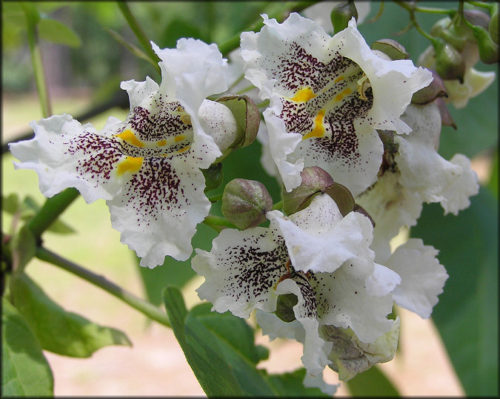
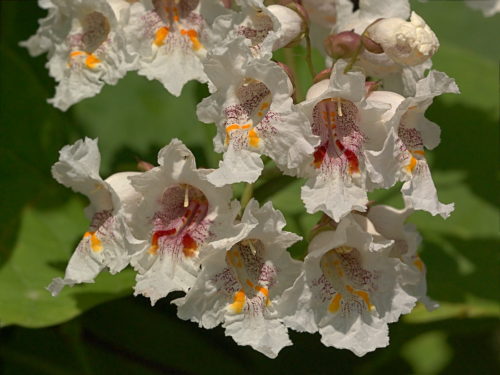
Catalpa blooms later than other deciduous trees, as a rule, in the second half of June. Therefore, when mass flowering in the garden ends, the plant pleases with abundant and large, chestnut, flowers collected in loose inflorescences. Blooms Catalpa for the 5-6th year after landing.
The fruit of the catalymp is a multiferous box, has a peculiar shape, resembling a narrow long pod (up to 50 cm). Such pods hang on the tree almost until spring, and give the catalymp unusually the original appearance. It is because of such a form of fruits, the tree in the people is also called "pasta". The seeds have Caphata - winged.
The distinction of the katalpa from other deciduous trees is its "evergreen" foliage, which, in the fall, almost not yellow, falls down when the temperature drops, leaving only the fruits-pods hanging.
Initially, the thermal-loving plant, Catalpa, is currently distinguished by the level of winter hardiness within the limits of even one species. In many ways, it depends on the terrain in which the seedlings were grown. Therefore, for the successful cultivation of the Capital in its region, it is necessary to use seedlings grown in the same climatic and geographical conditions.
Varieties of Catalpi
In nature, there are about 10 species of this plant, but in the moderate climate of the middle band is cultivated, mainly 4 types of catalymp: gorgeous, bignonoid, ovoid and hybrid.
Katalpa magnificent
It is a tree with a gray, lamellar, direct barrel and a decomposable crown, a pyramid shape. North America is considered to be the birthplace of this species, where Katalpa grows along the banks of rivers on wet and rich soil.
The height of the plant varies from 10 to 30 m, depending on climatic conditions.
Large leaves on long stiffs and cream inflorescences with a purple middle - the main decorative elements of the plant. It blooms this kind of catalympa abundantly, for a whole month, a bunch of pleasant light apple aroma.
In the place of the blurred inflorescences, narrow, long, brown, pods grow, where the seeds ripen. Seeds ripen by October-month, but pods continue to hang on a bare tree to the spring itself. Such an exotic look of winter catholp is very unusual and decorative.
The plant is fast-growing, frost-resistant and relatively drought-resistant. With all this, in the harsh winters it is possible to freeze annual unreserved shoots.
Catalpa gorgeous prefers well-lit, not shaded places.
Culture has a decorative variety - a thicker catalpa, which is different, "powdered" foliage.
Bignonyevoid Catalpa
The cortex of the catalpe of this species is also a plate-like, but it has a darkest color, brown shades.
Crown fluffy, stretched, rounded shape. Leaves of large sizes, glossy top and slightly pubescent - bottom. When rubbing, they make an unpleasant smell.
Approximately the 4th year after landing, the Bignonyevoid Catalpa blooms snow-white, with brown splashes and yellow strokes, inflorescences. Delicate and pleasant fragrance is felt throughout the entire period of flowering, located about a month.
The fetus is characteristic of the whole katalp - a box having a kind of elongated pod.
The tree grows in a height of 10 to 20 meters. Catalpa Bignonyevoid has several varieties:
- Aurea, characterized by golden leaves during their dissolving, later they acquire a light green color. The middle size tree, with a wide round and spreading crown.
- Nana, has a clearly pronounced spherical crown, with a diameter of up to 4 m. The lowest variety of catalymp (up to 4 m high), not forming colors widely used in landscape design.
- Ken, distinguished by yellow colorful leaves with a green core.
- Purple, possesses, at the beginning of vegetation, leaves, terracotta color, which are gradually green. The Catalpa is growing up to 8 m, has a conical frame of the crown, which, with age, is converted into a rounded one.
The presented forms of Caphatap are slow-growing, fairly unpretentious and moderately winter-resistant cultures. Best of all, to low temperatures adapted subspecies "Nana".
Katalpa ovate-shaped
The lowest view reaching in a natural natural environment is no more than 10 m in the height of China. In a temperate climate, it does not grow above 3-4 m.
The tree has a compact rounded crown with a large, slightly pointed leaves. Catalpa's egg-shaped flowers from June to July, white or cream inflorescences with a contrasting core. The amount of inflorescences is significantly lower than the above-described types of Capalpi.
The fruit is a box, tied up and looks like a not very long pod, but it is not time to grow completely seeds.
This form of the catalp is characterized by increased frost resistance (up to - 30 ° C) and a short period of vegetation of the plant. That is why, annual shoots early to win and do not make it possible in winter.
There are subspecies of shrub shape. Culture is popular when placing parks, garden sites, urban plantings.
Hybrid Catalpa
This form is obtained by crossing the katalpa bignonoid and ovoid. Tall plant capable of growing up to 20 m.
Crown rounded and stretched, leaves large, green.
Blossom abundant, continues up to 4 weeks. Inflorescences - loose, white, with brown splashes and yellow stripes.
The tree prefers open and sunny sections, with fertile and fertilized soil.
The culture is acclimatized to the conditions of the middle strip, winter-hardy and unpretentious in care.
Reproduction of Catalpi
Catalpa multiplies with 2 ways: from seeds and vegetatively (cuttings).
Seed fashion
- Collected in the fall, from the matured pods, the seeds of Caphata, soaked in warm water for 10-12 hours to increase their germination.
- Storage of seeds (no more than 2 years) is carried out in a dry and cooler place. It is better to use a paper bag or linen bag for these purposes.
- Seed seed in February-March to a greenhouse, a home greenhouse or a special container, covered with glass.
- Heat, sunlight and moderate humidity - ensure the germination of seeds after 3-4 weeks.
Shining
- In advance (in the second half of summer), cuttings are harvested, cutting off shoots, about 10 cm long and the presence of at least 3-4-kidney.
- Before planting cuttings into the ground mixture, you can handle their growth stimulant.
- Planted cuttings are placed in the room and only after rooting (the next year), plant them into open ground.
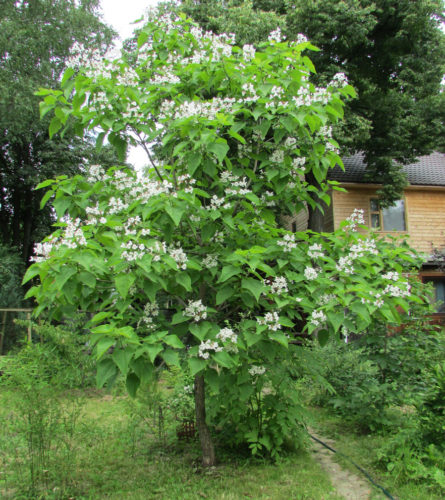
TECHNOLOGY LANDING CATALLIA
- The most optimal time for planting Capital - Spring. Although autumn landing is possible.
- Place for the plant is selected open and solar, but protected from drafts and winds so that the large and delicate leaves of the plant are not damaged.
- Soil does not have to be too fertile and fertilized in order not to stimulate the active increment of young shoots, most of which will still be extruded in the winter. It is enough to make charcoal or humus as fertilizers. Soils are perfect with neutral acidity, well-drained.
- For the primary fit into the container, it is recommended to prepare a boarding substrate from a mixture of river sand, chernozem, peat and humus in a 2: 2: 1 ratio.
- Culture poorly tolerates close grounding of groundwater or flooding with long water stag. The optimal option is moderate moisturizing.
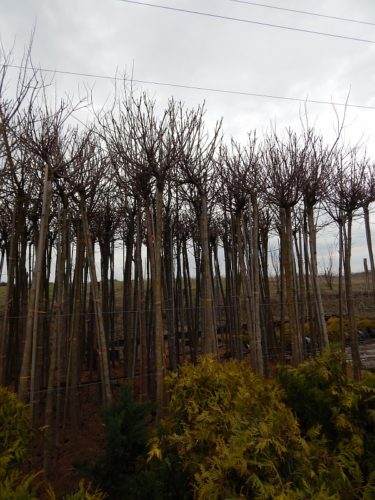
Seeds
- Sowing is carried out in spring or autumn.
- Seeds are sowing into the grooves, sprinkling the soil and creating a greenhouse effect for their germination. For these purposes, you can use a box and cover it with glass, periodically lifting it up and conducting shoots.
- Sung seeds provide temperature regimen 15 - 25 ° C, regular moderate watering and scattered sunlight.
- The seedlings have grown over the winter sitting in an open ground when warm weather is installed. As a rule, this happens at the end of May.
Saplings
- Huting the seedlings of the catalymp in open soil, prepare enough deep (about 1 m) and wide (about 70 cm) landing pit. The size of the pit directly depends on the size of the seedling. Wood ashes (5-7 kg), a little (about 50 g) of phosphoritic flour, humid, sand and peat are poured onto the bottom of the pits.
- The distance between the pit should be at least 3 m, optimally about 5 m, depending on the type of catalymp.
- Holding the vertically seedling, sprinkle tightly earth and spill good water. Root neck, as a result, should be on the same level with the Earth.
- The rolling circle is recommended to climb immediately after landing.
- Young seedlings after landing need regular (1 time per week) watering.
- For the first few years, the seedlings need to be covered by the winter, in order to avoid the freezing of the plant.
- If Caplip seedlings are not grown specifically from cuttings or seeds, they can be bought in a specialized garden shop. Acquire better annual grown and strong seedlings. It is important to buy seedlings in the outlets of their region, maximally acclimatized and adapted to a certain climatic zone.
- The growth of the young trees is, on average, 1 m per year; Planting the plant will be able in 4-5 years.
Plant care, agrotechnology rules
Catalpa is an unpretentious plant that requires a minimum of time and labor costs for its care. Fast-growing young church, with an annual significant increase in green mass, requires increased attention only in the period after landing and the next 2-3 years. In general, plant care agricultural equipment includes the following main stages:
- Watering
Watering is carried out 1 time per week, abundantly, at least 1.5-2-buckets per plant. In the event of precipitation and the lack of hot weather, watering reduces, not allowing moisture or moisture. With insufficient watering, the leaves of the Caphata are kicked by losing the necessary tour, and all the plant weakens significantly.
- The soil loosening
Like any other culture, Catalpa needs soil looser and timely removal of weed grass. You can loosen the earth deeply (up to 30-40 cm), because the root system at the tree - the rod and it is almost impossible to damage it. But deep drainage plant will only benefit.
- Undercaming and fertilizer
It is enough to spend two seasonal denunciations: at the beginning of the vegetation (5-7 liters of dung alive or dung-raw) and during flowering period (mineral fertilizer). Fertilizers are entered, as usual, after watering. Dung alive is preparing in a ratio of 1:10, diluted with water.
- Preparation for winter
It is necessary to stream for the winter. Young seedlings and a tree needed, since they have not yet been derefected and very susceptible to frost. For this, the trunks are wrapped with a snack or burlap, and the priesthood circles fall asleep with a thick layer of foliage. With age, the frost resistance of the plant increases significantly. Even if an adult plant was partially damaged by winter frosts, his shoots will quickly grow up next season.
- Cutton trimming
The sanitary trimming of the tree includes the removal of frozen, damaged or dried shoots. Most often suffer from young annual shoots. The trimming is carried out annually, in the spring, after which the tree quickly creates lost. Catalpa perfectly tolerates trimming and often gardeners combine forced - sanitary trimming, with a decorative crown haircut.
- Fighting pests and diseases
Catalpa is characterized by high resistance to, various kinds, diseases and impact of pests.
Occasionally, the tree may be affected by the dumping foam, then the plant should be treated several times insecticide, for example, carbofos. Otherwise, the deformation of shoots will be observed.
When infected by the catalympus Catalp, it is necessary to spray the tree insecticide before the renal dissolves.
Too dense and dry soil can provoke the infection of the catalympa of the genus of the genus verticillion (Wilt), leading to the subsequent drying and death of the tree. The first signs of the virgin disease are the sluggish and drooping leaves, beginning yellowing and prematurely fall. At an early stage, the disease is curable: it is enough to treat the tree by a fungicide, such as Fundazol or Topcin-M.
Exotic Catalpa is perfectly cultivated on a drained, fertile soil, giving a rapid increase, both in height and growing due to the green crown of the plant. Naturally, such an unusual and decorative appearance of a catalp will decorate any parking area and, with proper care, will be able to please the surrounding original appearance and abundant blooming, not one year old.
Using Caplip
Due to its original decorative qualities, Catalpa is widely used in landscape and landscape compositions.
It looks great in a single planting plant, attracting attention to itself at any time of the year. The leaves resembling the huge green "elephant ears", the neat shape of the crown in the form of a ball, the abundance of large gentle inflorescences and the bizarre form of fruits - similar plants is not so easy to find among the variety of decorative cultures.
Whether there are high splashing trees or dwarfs with a ball crown, representatives of the kind of catalp everywhere will find their place in a small garden, a local area or a city square.
Speeciously look at the group landing of Caplip, for example, along the park tracks or borders.
And on the shore of the reservoir, this unique tree is simply not replaceable. Often sitting on, popular with landscaping, the type of Capital - "Nana" or varieties with an unusual golden, coloring foliage.

When placing parks and in landscape design, Catalpa looks great in compositions with centuries-old oaks, magnolias and a variety of shrubs.
Having occupy an increasing share in the gardening of cities, Catalpa copes excellently with increased ridiculous climates and winter frosts. And on the hot sunny days, the plant "shares" with the surrounding thick shadow of the cool shadow and freshness.
Among other things, Catalpa is used as excellent honey.
Capital seeds are also used in the paint industry, manufacturing quickly dry oil from them.
In any case, if the house territory or the country area allows you to plant this exotic tree - without thinking "revive" their garden to them. And although Catalpa, like other fruit-garden trees, will not be able to please with delicious fruits, this culture will be rewarded by its unique beauty and stylish appearance.
Catalpa, photo
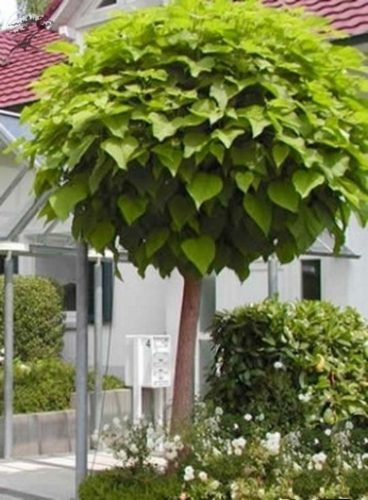

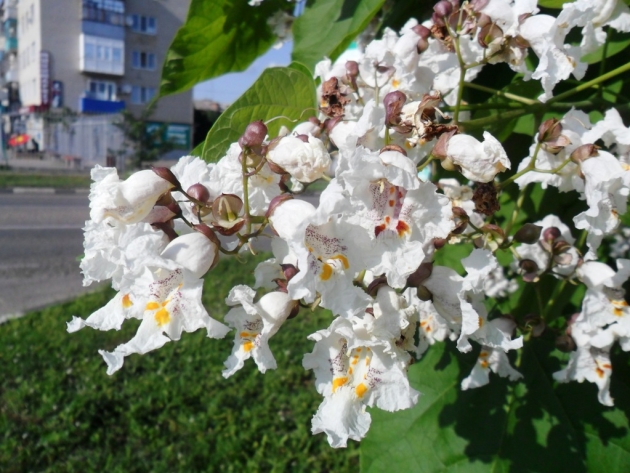
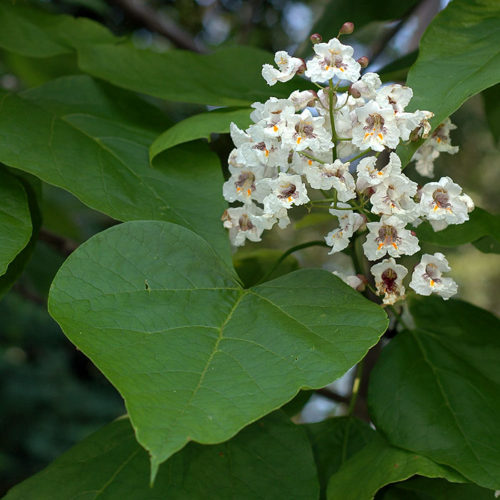
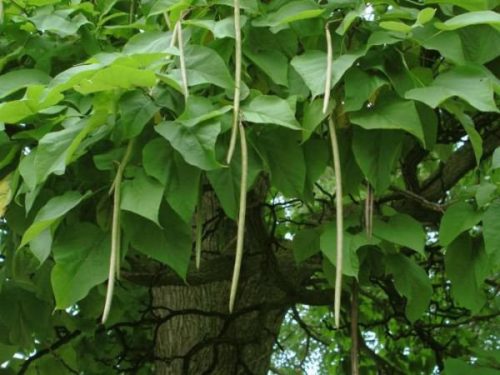
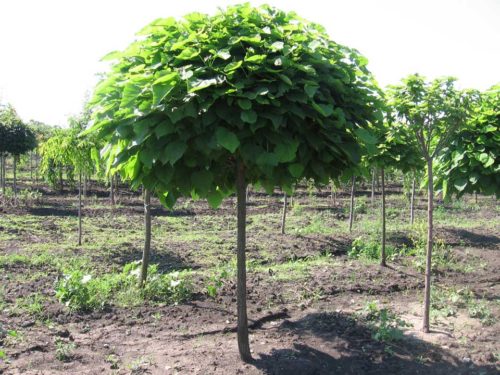

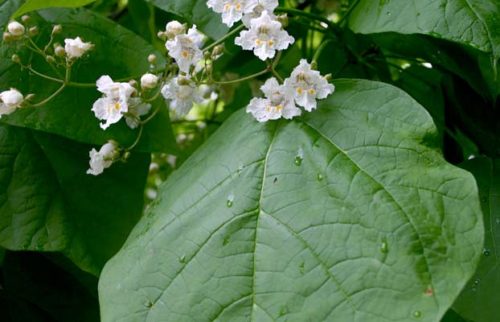
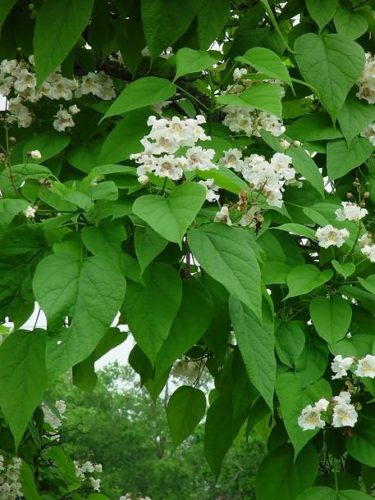
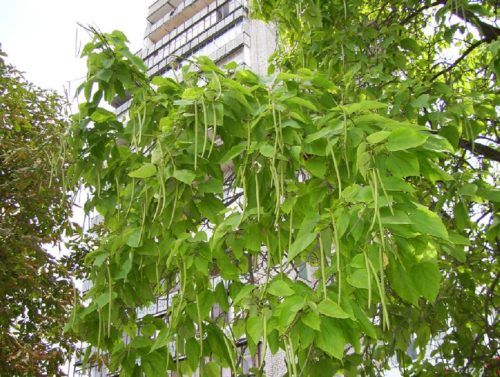
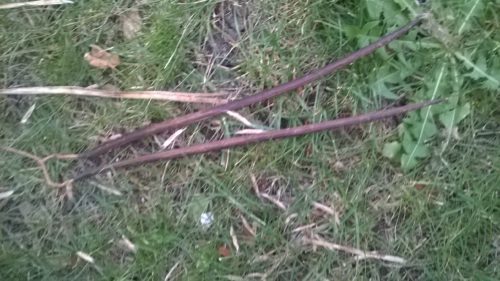
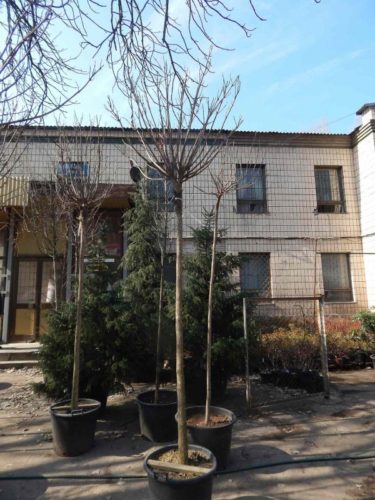
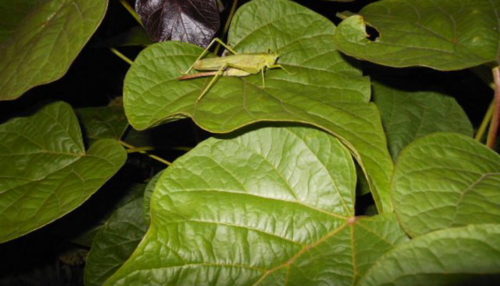
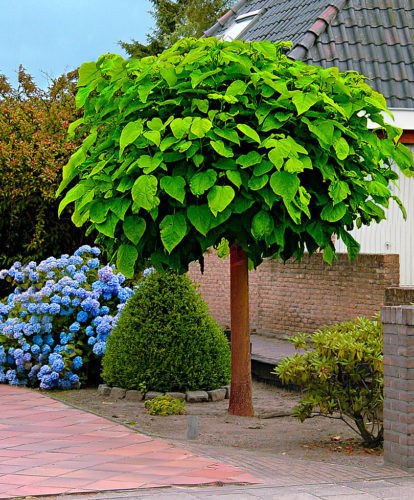
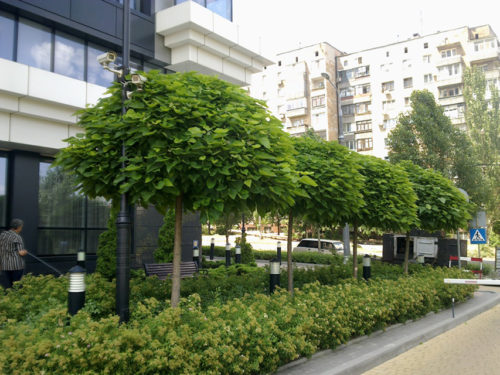
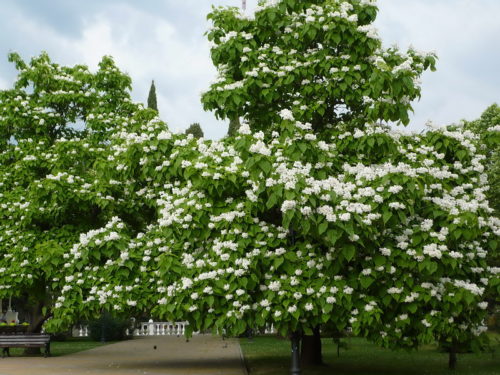

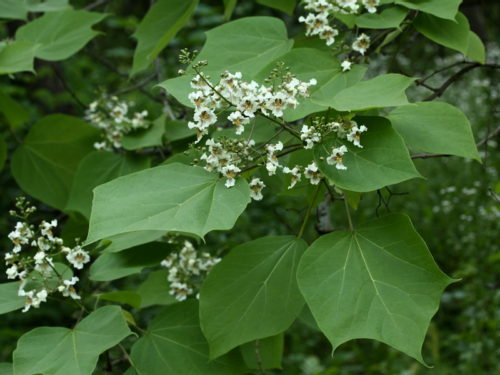
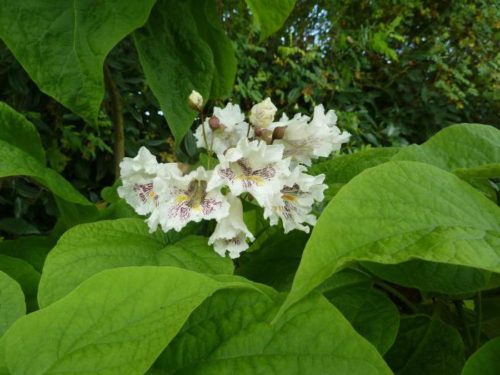

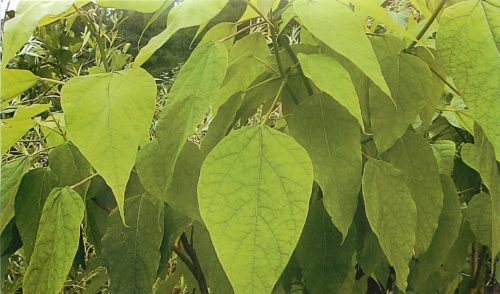












 Start a discussion ...
Start a discussion ...